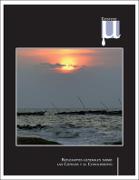| dc.contributor.author | Jiménez Espinosa, Alfonso | |
| dc.date.accessioned | 2019-02-15T15:46:07Z | |
| dc.date.available | 2019-02-15T15:46:07Z | |
| dc.date.issued | 2010-01-01 | |
| dc.identifier.citation | Jiménez Espinosa, A. (2010). La naturaleza de la Matemática, sus concepciones y su influencia en el salón de clase. Educación y Ciencia, (13), 135-150. Recuperado a partir de https://revistas.uptc.edu.co/index.php/educacion_y_ciencia/article/view/765. http://repositorio.uptc.edu.co/handle/001/2432 | spa |
| dc.identifier.issn | 0120-7105 | |
| dc.identifier.uri | http://repositorio.uptc.edu.co/handle/001/2432 | |
| dc.description | 1 recurso en línea (páginas 135-150) | spa |
| dc.description.abstract | Even if in the last two decades the situation tends to change, the history of mathematical education shows
that, it has had the belief that to be a maths teacher, one only needs a good command of its topics, without having in mind that one has an attitude in front of the class. The teacher’s attitude is reflected in the activities that the students develop, according how he perceives the subject and the objectives pursued by his teachings. In other words, a good mathematics knowledge is a necessary condition, but not sufficient to teach it.
The teacher’s performance in front of his students -most of the time implicit and unconscious- determines a great part of the students progress, the results in their learning and their like or dislike of the subject. Therefore, ‘the problem is not only how much mathematics knowledge one has, nor which is the best way to teach it, but to have sufficient clarity of what mathematics is truly about’ (Hersh, 1986). Traditionally, there have been two basic forms of conceiving mathematical concepts: As abstract entities or as entities related to the world and the environment in which we live. Through the history of maths, diverse philosophical schools have studied these two forms of viewing mathematical notions: As abstract entities or entities which have a relation with the world and the environment where ones lives. Throughout maths’ History diverse philosophical schools have studied these two ways to see the mathematical concepts, such as platonism, idealism, rationalism, logicism, empiricism, constructivism, formalism and ultimately the social-cultural approach. Thus the objective of this article is to examine some of these philosophical statements about mathematics nature, its presence in the classroom, and in the students learning in order to generate a reflection among those who teach it, to make mathematics more enjoyable and meaningful to children and teenagers. | eng |
| dc.description.abstract | Aunque en las últimas dos décadas la situación tiende a cambiar, históricamente se ha tenido la creencia de que para enseñar matemáticas sólo se requiere el buen dominio de los temas, sin tener en cuenta que implícitamente hay una actitud frente a la clase, esta actitud del profesor se refleja en las actividades que desarrollan los estudiantes, de acuerdo con lo que él crea que es esta disciplina y con los fines que persiga su enseñanza, es decir, saber buena matemática es una condición necesaria, pero no suficiente para enseñarla. La actuación del profesor frente a sus estudiantes –la mayoría de las veces implícita e inconsciente– determina en gran medida el progreso de ellos, los resultados en sus aprendizajes y el gusto o la aversión por la matemática. Así las cosas, el problema no es solo cuánta matemática se sabe, ni cuál es la mejor forma de enseñarla, sino tener suficiente claridad sobre qué es realmente la matemática (Hersh, 1986). Tradicionalmente se han manejado dos formas básicas de concebir los conceptos matemáticos: como entes abstractos o como entes que tienen relación con el mundo y con el entorno en que se vive, a lo largo de la historia de la matemática, diversas escuelas filosóficas han estudiado estas dos formas de ver los objetos matemáticos, como el platonismo, el idealismo, el racionalismo, el logicismo, el empirismo, el constructivismo, el formalismo y, últimamente, el enfoque socio-cultural. De esta forma, el objetivo de este artículo es examinar algunas de estas posturas filosóficas sobre la naturaleza de la matemática, su incidencia en el salón de clase y en el aprendizaje de los estudiantes, y generar reflexión entre los docentes del área, conducente a hacer una matemática más agradable y significativa para los niños y jóvenes. | spa |
| dc.format.mimetype | application/pdf | spa |
| dc.language.iso | spa | spa |
| dc.publisher | Universidad Pedagógica y Tecnológica de Colombia | spa |
| dc.rights | Copyright (c) 2010 Universidad Pedagógica y Tecnológica de Colombia | spa |
| dc.rights.uri | https://creativecommons.org/licenses/by-nc/4.0/ | spa |
| dc.source | https://revistas.uptc.edu.co/index.php/educacion_y_ciencia/article/view/765 | spa |
| dc.title | La naturaleza de la Matemática, sus concepciones y su influencia en el salón de clase | spa |
| dc.title.alternative | Mathematics nature, its conceptions and influence in the classroom | eng |
| dc.type | Artículo de revista | spa |
| dc.description.notes | Bibliografía y webgrafía: páginas 149-150. | spa |
| dc.description.notes | Artículo de investigación, Grupo de Investigación Pirámide, Universidad Pedagógica y Tecnológica de Colombia | spa |
| dc.rights.accessrights | info:eu-repo/semantics/openAccess | spa |
| dc.type.coar | http://purl.org/coar/resource_type/c_6501 | spa |
| dc.type.driver | info:eu-repo/semantics/article | spa |
| dc.type.version | info:eu-repo/semantics/publishedVersion | spa |
| dc.rights.creativecommons | Atribución-NoComercial 4.0 Internacional (CC BY-NC 4.0) | spa |
| dc.subject.armarc | Filosofía de las matemáticas | |
| dc.subject.armarc | Matemáticas - Enseñanza | |
| dc.subject.proposal | Naturaleza de la matemática | spa |
| dc.subject.proposal | Objeto matemático | spa |
| dc.subject.proposal | Enseñanza | spa |
| dc.subject.proposal | Aprendizaje | spa |
| dc.relation.ispartofjournal | Educación y Ciencia;Número 13 (2010) | spa |
| dc.type.content | Text | spa |
| dc.type.redcol | https://purl.org/redcol/resource_type/ART | spa |
| dc.type.coarversion | http://purl.org/coar/version/c_970fb48d4fbd8a85 | spa |
| dc.rights.coar | http://purl.org/coar/access_right/c_abf2 | spa |


